Charleston Currents #12.33 | June 29, 2020
BONEYARD BEACH: There’s a dark, majestic beauty in the fallen trees on the sand at a boneyard beach in Botany Bay near Edisto Island. More staycationers may be visiting than usual as they try to shuck the coronavirus shut-in blues. Photo by Catherine Brack.
 TODAY’S FOCUS: Sullivan’s Island celebrates a different kind of Carolina Day
TODAY’S FOCUS: Sullivan’s Island celebrates a different kind of Carolina Day
COMMENTARY, Brack: McMaster needs to issue statewide mask order now
IN THE SPOTLIGHT: Titan Termite & Pest Control
PHOTO ESSAY: Calhoun statue comes down
NEWS BRIEFS: Calls to repeal Heritage Act gain ground
FEEDBACK: Got something to say? Let us know by mail or email
MYSTERY PHOTO: Marine scene
CALENDAR: Singleton to release 4th solo album July 3
S.C. ENCYCLOPEDIA: Savannah River Site
Sullivan’s Island celebrates a different kind of Carolina Day

Officials walk with a Moultrie flag to raise it on Sullivan’s Island, celebrating the 244th anniversary of Carolina Day. Photos by Rob Byko.
By Rob Byko, special to Charleston Currents | Sullivan’s Island townsfolk, a few visitors and a smattering of stoic fans of South Carolina and Revolutionary War history on Saturday got together to commemorate Carolina Day, the 244th anniversary of the Battle of Sullivan’s Island. The annual event, co-sponsored by Sullivan’s Island and the Battery Gadsden Cultural Center (BatteryGadsden.com), was held at the Sullivan’s Island Town Hall Plaza. The move from last year’s venue, Fort Moultrie National Park, was necessitated by ongoing concerns over the spike in COVID-19 cases reported across the state. Masks and social distancing were adequately observed by a majority of those in attendance, though not by all.
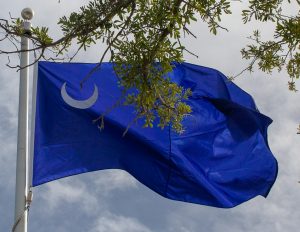 While the morning lacked much of the flash and bang of last year’s event, which featured Revolutionary War reenactors and the several rounds of cannon fire in the open field beyond the old fort, this year’s program’s master of ceremonies, Chuck Galis, kept the regimen in order and forged ahead. An invocation by the Rev. Lawrence McInerny preceded the town’s Carolina Day proclamation, delivered by Mayor Patrick O’Neil. The presentation and raising of the Moultrie flag by members of town council and the Battery Gadsden Board of Directors followed.
While the morning lacked much of the flash and bang of last year’s event, which featured Revolutionary War reenactors and the several rounds of cannon fire in the open field beyond the old fort, this year’s program’s master of ceremonies, Chuck Galis, kept the regimen in order and forged ahead. An invocation by the Rev. Lawrence McInerny preceded the town’s Carolina Day proclamation, delivered by Mayor Patrick O’Neil. The presentation and raising of the Moultrie flag by members of town council and the Battery Gadsden Board of Directors followed.
Maggie Adams, first vice regent for the Fort Sullivan Chapter of the National Society Daughters of the Revolution, remarked on the significance of the day. Then the president of Battery Gadsden Cultural Center, Mike Walsh, gave a historical reading entitled, “Who was William Moultrie?” which delighted the crowd and brought the ceremony to close. McInerny returned to deliver the benediction.
Those in the plaza then dispersed. Dog-walkers, passers-by and Saturday cyclists went about their day. A few masked faces were overheard saying they were looking ahead to next year’s commemoration, hopeful for a return to normalcy –life without masks — and to once again experience the flash and bang of cannon-fire on the open field at Fort Moultrie.
BRACK: McMaster needs to issue statewide mask order
By Andy Brack, editor and publisher | You wouldn’t walk barefoot and bare-chested into a shop, especially if it had a sign on a door that said, “No shoes. No shirt. No service.” To do so would be gross and rude.
 So why in the world are people getting all bent out of shape when “No mask” becomes the same kind of societal no-no? At a time when more than 1,000 people in our state are picking up coronavirus every day, not wearing a mask in public is about as smart as walking barefoot on sun-baked pavement on a 100-degree day.
So why in the world are people getting all bent out of shape when “No mask” becomes the same kind of societal no-no? At a time when more than 1,000 people in our state are picking up coronavirus every day, not wearing a mask in public is about as smart as walking barefoot on sun-baked pavement on a 100-degree day.
No one likes wearing masks. They’re not comfortable, just as pants are uncomfortable to some people. But we don’t shop in panties or boxer shorts.
Because of the highly infectious nature of the virus through airborne transmission, health officials say wearing masks protects you from getting microscoping droplets that can infect you. But just as importantly, they keep vapor emanating from you from getting to those around you. Not only does wearing a mask protect you, but it protects others. And that’s why it helps curb its spread.
If you’re getting hot and bothered about masks taking away your constitutional rights, wake up. That’s hogwash. A mask is a temporary measure to protect people throughout our communities from contracting the virus and dying — which they are. Almost twice as many people have died in the U.S. since March as did soldiers in Vietnam in years of war.
So suck it up and mask it up, South Carolina, just like mayors and city councils are doing across the state.
“Sometimes emergency circumstances are so overwhelming we must think of ourselves as a collective first and as individuals second,” Columbia Mayor Steve Benjamin wrote in a Thursday email. “And because of the COVID-19 pandemic and its continued accelerated spread through our Midlands communities, there is no doubt or discussion that we are in such overwhelming emergency circumstances.”
Two in five cases reported in the Midlands since March have been reported in the last week, state epidemiologist Linda Bell told Columbia City Council on Tuesday.
Columbia, like Greenville, Charleston and other communities, has passed a local, temporary mask ordinance for when people are in public.
“This decision was not taken lightly by members of our city council or myself,” Benjamin wrote. “As we watched other major municipalities enact their own mandatory mask policies throughout the last few weeks, we have been in touch with our Midlands community to gain a thorough understanding of how they felt on this issue. For myself, the overwhelming response from the public has been in support of requiring everyone to wear masks to reduce the spread of the virus.”
So now it’s time for Gov. Henry McMaster to buck up and mandate statewide mask use in public places for at least four weeks to try to stop community spread of the virus. To do otherwise is the height of irresponsibility and a prescription for more cases, overwhelmed hospitals and death.
State Sen. Mia McLeod, D-Richland, emphatically called for a statewide mask mandate earlier this week.
“Our state is in a public health crisis of epic proportions,” she wrote in an open letter to McMaster. “And your refusal to mandate face masks in public is wrong. Dead wrong. We’ve long since passed our initial projections. In the last 3 months, nearly 26,000 South Carolinians have tested positive for COVID-19 and about 660 people have died because of this deadly virus….
“Now is certainly not the time for partisan politics or pandering to certain demographics. We don’t need divisive rhetoric or leaders who openly mock and deliberately defy their administrations’ own safety guidelines. Our citizens need leadership because slowing the spread of this virus is as much about leadership as it is personal responsibility.”
Yes, governor, now is the time. If we want life to return more quickly to normal, our state needs to stop taking the virus lightly and mask up now. Don’t you think it’s pretty sad that we are actually yearning for the good old days of April when there were about 1,000 cases of coronavirus for the whole month, compared to 1,000 a day now because the virus is spreading?”
- Have a comment? Send to: editor@charlestoncurrents.com.
Titan Termite & Pest Control
 Titan Termite & Pest Control, headquartered in Charleston, is a full service residential, commercial and industrial pest control company serving South Carolina. It is a third-generation, family-owned company known for outstanding customer service. Each associate is dedicated to the customer and exhibits integrity and respect. Titan’s pest professionals can assist your commercial or residential location with general pest control, termite inspections, termite control, flea control, bed bug extermination, ant control and more. Titan Termite and Pest Control continues to set high standards so that its customers receive the best possible service. Titan’s technicians are knowledgeable of the latest in pest control techniques, which enables the company to customize effective treatment plans for every situation.
Titan Termite & Pest Control, headquartered in Charleston, is a full service residential, commercial and industrial pest control company serving South Carolina. It is a third-generation, family-owned company known for outstanding customer service. Each associate is dedicated to the customer and exhibits integrity and respect. Titan’s pest professionals can assist your commercial or residential location with general pest control, termite inspections, termite control, flea control, bed bug extermination, ant control and more. Titan Termite and Pest Control continues to set high standards so that its customers receive the best possible service. Titan’s technicians are knowledgeable of the latest in pest control techniques, which enables the company to customize effective treatment plans for every situation.
- Free estimate: 888-794-5603.
- Contact Titan online.
- To meet all of our underwriters, click here.
Calhoun statue comes down in Charleston
Staff reports | Contributing photographer Rob Byko captured the moment Wednesday (above) that a statue of John C. Calhoun cracked away from its pedestal after workers sawed and chiseled for 17 hours to free it.
After Charleston City Council voted Tuesday night to take down the statue, work crews arrived shortly after midnight Wednesday to start the removal process. Originally, officials thought it would take a few hours to unattach the bronze statue from the 115-foot pedestal at Marion Square, but workers discovered they had to saw through a metal rod inserted more than a century ago to provide stability, particularly from hurricane-force winds.
Throughout the day, hundreds stopped by to watch the workers’ progress. Just after 5 p.m., the statue came down. It then was loaded onto a truck and taken away. Read more about what happened Wednesday.
- Have a comment? Send to: editor@charlestoncurrents.com
Calls to repeal Heritage Act gain ground
Staff reports | Close to one-third of state lawmakers say they are for repealing the Heritage Act, according to an organization pushing its repeal. Repeal the Heritage Act said 49 lawmakers have expressed public support for the law’s repeal. It requires two-thirds of the General Assembly’s two chambers to agree to any changes or removals of war and heritage monuments on public property, including those commemorating the Confederacy and African American heritage.
Last week, Charleston City Council voted to remove a statue of John C. Calhoun from atop a 115-foot pedestal at Marion Square. By Wednesday evening, it was gone. Read about it here. After the vote, S.C. Attorney General Alan Wilson issued an opinion that the statue was not protected by the Heritage Act.
In other news:
![]() Thousands of students haven’t checked in with teachers. As many as two in 100 South Carolina public school students — 15,000 students — have not checked in with their teachers since mid-March, according to preliminary data collected by the S.C. Department of Education and shared with legislators. Numbers are lower in Charleston County — about four dozen students — than other parts of the state, likely because of more staffing and resources of the large school district.
Thousands of students haven’t checked in with teachers. As many as two in 100 South Carolina public school students — 15,000 students — have not checked in with their teachers since mid-March, according to preliminary data collected by the S.C. Department of Education and shared with legislators. Numbers are lower in Charleston County — about four dozen students — than other parts of the state, likely because of more staffing and resources of the large school district.
But Lexington Republican Sen. Katrina Shealy told sister publication Statehouse Report that more people need to be worried. “If two kids go missing it’s a ‘Dateline’ story. If 15,225 kids go missing, it’s either a Stephen King novel or the Rapture happened and we got left behind, and somebody has to be worried,” Shealy said, adding that the more likely outcome will be thousands of children left behind academically. Official numbers are to be released this week. Read more.
Virus continues to surge. An average of 1,210 South Carolinians were reported to have coronavirus last week as state health officials said 8,476 people contracted the virus since June 22. Over the week, 59 more South Carolinians died from the disease for a total of 712 since the pandemic started. South Carolina has one of the highest rates of infection in the country currently.
Mask ordinance approved in Charleston. Starting Wednesday, people in the city of Charleston will be required to wear face coverings in public areas, according to a new emergency ordinance that passed last week to reduce risk of exposure to coronavirus. The fine-only ordinance will be in effect for 60 days, according to the city, unless it is terminated earlier.
Early Thanksgiving. Hats off to employees at the S.C. Port Authority which is donating its 2020 Thanksgiving gift cards to the Lowcountry Food Bank — a gift worth $22,000, according to the food bank. “We understand the increased need for healthy food this year because of COVID-19, and our teammates want to help,” said Jim Newsome, president and CEO of SC Ports, in a press release. “We trust the Lowcountry Food Bank as good stewards to fight hunger for our neighbors, and we hope that our contribution inspires additional companies to give.”
Statehouse Report’s Lindsay Street contributed to this section. Have a comment? Send to: editor@charlestoncurrents.com
Got something to say? Let us know by mail or email
We’d love to get your impact in one or more ways:
Send us a letter: We love hearing from readers. Comments are limited to 250 words or less. Please include your name and contact information. Send your letters to: editor@charlestoncurrents.com. | Read our feedback policy.
Tell us what you love about the Lowcountry. Send a short comment – 100 words to 150 words – that describes something you really enjoy about the Lowcountry. It can be big or small. It can be a place, a thing or something you see. It might be the bakery where you get a morning croissant or a business or government entity doing a good job. We’ll highlight your entry in a coming issue of Charleston Currents. We look forward to hearing from you.
Marine scene
Here’s a scene somewhere on the water. Send your best guess to editor@charlestoncurrents.com. And don’t forget to include your name and the town in which you live.
Our most recent mystery, “Pretty gazebo begs question, ‘Where am I?,” is located on Race Street in Charleston in a park adjacent to the Holy Trinity Greek Orthodox Church.
Several alert readers identified the gazebo, including Chris Brooks of Mount Pleasant; George Graf of Palmyra, Va.; Richard Gowe and Delia A. Smith, both of Charleston; and Allan Peel of San Antonio, Texas.
Peel provided some context: “In the center of the domed structure is a sand-carved glass sculpture of Mother Mary and Baby Jesus that was created by Lowcountry native artist Lex Melfi. In his late 40s, Lex Melfi became interested in sand-blasting glass as an art form after seeing a piece of such work in Opa-locka, Florida over 22 years ago. Born and raised in Summerville, he comes from a large Italian family that immigrated to the Charleston area in 1847.
“The highly technical and challenging process of sand-carved glass involves the use of high pressure air and sand digging into the glass rather than scratching the surface. The sand blaster uses different nozzles, air pressures, and grits of sand to carve-out varying degrees of depth into the glass, giving it a three dimensional look that is breath-taking to look at, particularly when light is refracted through the glass. Melfi’s first commissioned piece of work was the 8-foot tall, 8-panel window in the Bell Tower at the Grace Episcopal Church in Charleston. The sand-carved sculpture of Mother Mary and Baby Jesus in today’s mystery photo is 7′ 6″ high and 3′ 4″ wide. If you would like to learn more about Lex Melfi and his passion for sand-carving glass, click here to view a WCBD News 2 YouTube video clip about the artist and his work.”
- Send us a mystery: If you have a photo that you believe will stump readers, send it along (but make sure to tell us what it is because it may stump us too!) Send it along to editor@charlestoncurrents.com.
Singleton to release 4th solo album July 3
Staff reports | Local jazz musician Charlton Singleton will release his first new studio album in seven years when Date Night is available July 3 on the Beehive label. It’s the first time Singleton, who helped propel Lowcountry band Ranky Tanky to a Grammy award, will enter the smooth jazz genre.
 “The instrumentals just came to me in the last year or so usually while I was doing yard work,” Singleton said in a press release. The vocal tracks hearken back to when Singleton was a member of the popular local Charleston rock/ska band SKWZBXX in the 1990s. The new album includes four instrumental tracks and four songs with Singleton’s vocals. It’s produced by Calvin Baxter III, who also plays drums on the album.
“The instrumentals just came to me in the last year or so usually while I was doing yard work,” Singleton said in a press release. The vocal tracks hearken back to when Singleton was a member of the popular local Charleston rock/ska band SKWZBXX in the 1990s. The new album includes four instrumental tracks and four songs with Singleton’s vocals. It’s produced by Calvin Baxter III, who also plays drums on the album.
Additional musicians contributing to the album include keyboardist Demetrius Doctor, guitarists Dave Grimm and Greg Loney, and bassist LaVonta Green. The new album’s first single, “Sea Breeze, was released on April 24, and has already been picked up by multiple terrestrial radio stations across the U.S., as well as SiriusXM Radio’s smooth jazz channel Watercolors (Ch. 66). The second single, “Sunrise,” was released on May 22. “Date Night” will be available starting July 3 on all digital music services, including Apple Music, Amazon, Spotify, Pandora, and Tidal.
Also on the calendar:
![]() Living Your Truth series, 7 p.m. Tuesday via Zoom. The Social Justice Racial Equity Collaborative will feature Maya Green and Courtenay White, co-founders of SheStrong, at its June 30 online discussion. Green is a 2020 graduate of the School of the Arts. White is a 2020 graduate of Porter Gaud. According to a press release, “These remarkable and accomplished young women have taken on the mantle of social justice and women’s rights and represent the next generation of global leaders. Hear their perspective on the skills young leaders need to cultivate to effectively lead and service and advocacy efforts that are making a difference, not only for youth but also for communities across the country.” Register here..
Living Your Truth series, 7 p.m. Tuesday via Zoom. The Social Justice Racial Equity Collaborative will feature Maya Green and Courtenay White, co-founders of SheStrong, at its June 30 online discussion. Green is a 2020 graduate of the School of the Arts. White is a 2020 graduate of Porter Gaud. According to a press release, “These remarkable and accomplished young women have taken on the mantle of social justice and women’s rights and represent the next generation of global leaders. Hear their perspective on the skills young leaders need to cultivate to effectively lead and service and advocacy efforts that are making a difference, not only for youth but also for communities across the country.” Register here..
Safe Sounds at Firefly. You can enjoy these shows at a socially-distanced concert series every Friday and Saturday night through mid-July:
- July 3 – The Midnight City Band
- July 11 – The Yacht Club
- July 18 – The Reckoning
- July 25 – Natty Grass
Tickets for the events are limited to 500 and no more than four tickets can be purchased at a time. Each set of four tickets will secure a spot in a 10-by-10 square, separated on all sides by 8 feet. Guests are encouraged to bring blankets and chairs to enjoy the concert. You are not allowed to bring dogs, children, and outside food and drink. Tickets are available now to anyone 21 and over at citypapertickets.com. Shows will begin at 7 p.m., with doors at 6 p.m.
Aquarium to open new experience on July 4. “Monsters” is a new experience offered starting July 4 at the S.C. Aquarium. “From micro to mega, explore the Aquarium in a whole new way,” according to promotional material. You can also participate online in the attraction’s daily Nature Challenge, a virtual “Passport to Fun” and a “Moment of Zen” that has started. The aquarium also offers daily education classes at 10 a.m. and 2 p.m., Monday to Friday, via its virtual network. Learn more.
Redux show: Through July 24. Redux Contemporary Art Center offers Creative Corridors: The Annual Redux Studio Artist Exhibition through July 24. The Annual Studio Artist Exhibition is an opportunity for Redux resident artists to showcase a sample of their work, as it relates to a specific prompt and is curated as a group exhibition in Redux’s main exhibition space. The exhibition is open Mondays and Wednesdays from 11 a.m. to 4 p.m. and Fridays from 11 a.m. to 3 p.m. More.
Online offerings:
- Spoleto at Home offers virtual programming through June 5 that you can enjoy from the comfort and safety of your own living room! Tune in for original concerts, best-of Chamber Music hits, and insightful conversations with Festival artists. All programs are free to experience; no tickets required. Click here to find more fun stuff to do.
- Gibbes Museum. You can enjoy lots of local art offerings through the website and social media accounts of the Gibbes Museum. At 10 a.m. on weekdays, the museum posts virtual readings and workshops on Facebook. Find more online.
- Avian Conservation Center. Access videos and live streaming presentations online to learn about what’s going on at the Center for Birds of Prey.
- Around the world. You can visit 500 museums across the world online through this Google amalgamation of sites.
If you have any online events, drop us a line (editor@charlestoncurrents.com) and make sure to put “Online event” in the subject line. Similarly, if you’ve got cool ideas for stuff to do while in isolation at home, send them our way.
Savannah River Site
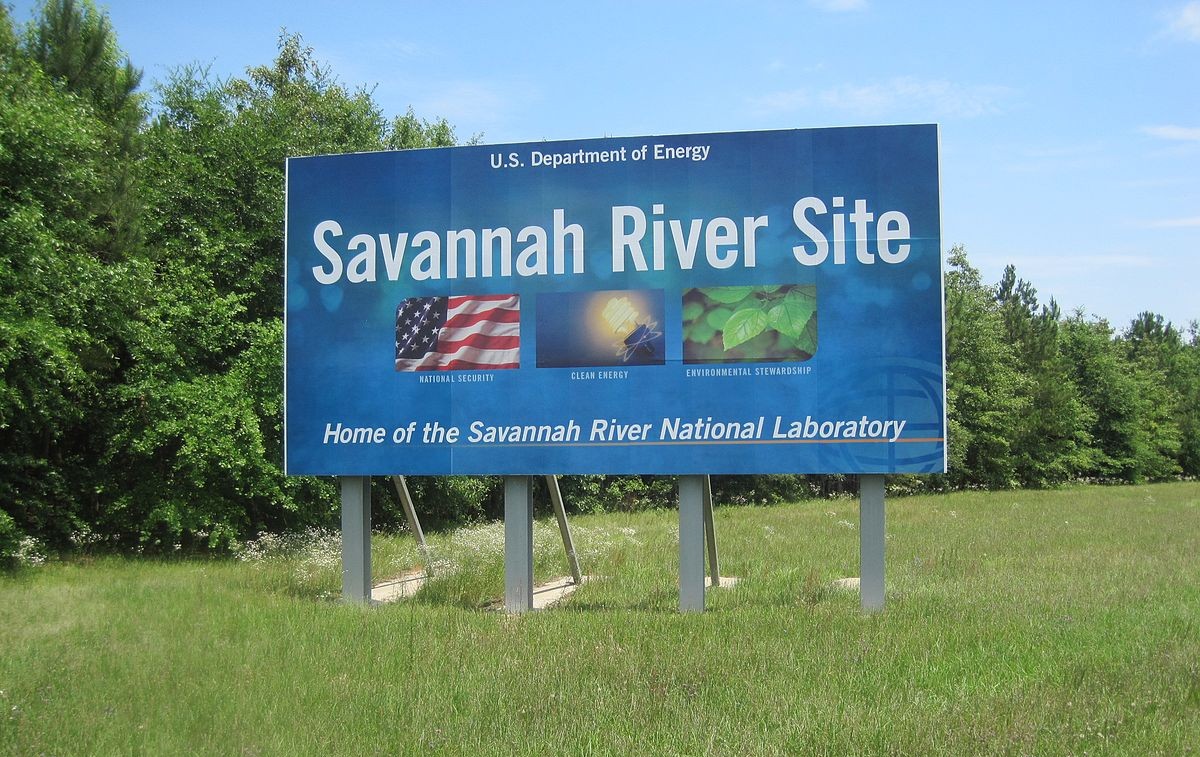
Photo via S.C. Encyclopedia.
The Savannah River Site (SRS) processes and stores nuclear materials in support of national defense efforts. SRS covers 310 square miles that border the Savannah River and encompass parts of Aiken, Barnwell, and Allendale Counties. Owned by the U.S. Department of Energy (DOE), it has been operated since 1989 by Westinghouse Savannah River Company. In 2002 SRS had a budget of nearly $1.3 billion and employed about 13,800 people.
- Related opinion: “New bombs headed to old plant?” by Suzanne Rhodes, Statehouse Report.
Following World War II, the federal government was interested in establishing sites for the creation of nuclear weapons. SRS was selected from an initial list of over one hundred potential sites in eighteen states as a facility to produce materials for nuclear and thermonuclear weapons. The materials produced at SRS would then be shipped to other locations where the actual weapons were manufactured. The site was chosen in 1950, and the Atomic Energy Commission (AEC) asked E. I. DuPont de Nemours and Company to design, construct, and manage the facility. Construction began on February 1, 1951, and the heavy water plant began operation on August 17, 1952. Construction was fully complete in 1956. Because of security concerns, SRS was protected by U.S. Army anti-aircraft battalions from 1955 to 1959.
The construction of the plant precipitated two major population shifts. First, workers moved to South Carolina to construct and operate the plant. Building the plant required 35,000 workers, who came from across the country. After construction, duPont employees arrived to manage the SRS operations. The nearby town of Aiken became inundated with this influx of new workers. Although the workers overwhelmed public services and drove off some of the visitors who used Aiken as a winter colony, the construction project put about $1 million per day into the area’s economy.
The second demographic shift affected the six thousand residents of several small communities, including Ellenton and Dunbarton, which were located in the area to be taken over by SRS. For security and safety reasons, these townspeople were required to leave by March 1, 1952, only fifteen months after the AEC’s announcement that the SRS would be built. The government appraised the value of homes, farms, and other real estate of Ellenton and Dunbarton; owners received government payment for their properties but no assistance in finding new homes and relocating. The federal government played no role in designing or creating a government town to serve the needs of residents, as they had with other nuclear projects at Oak Ridge, Tennessee, and Hanford Washington. Hardest hit were renters, who received no compensation at all but still had the cost and inconvenience of the mandatory and permanent evacuation. Many of these displaced residents moved just north of the plant site and formed a new community called New Ellenton.
During the 1950s five reactors were built, and SRS began to produce nuclear materials, primarily tritium and plutonium-239. Radioactive materials were moved from the reactors to one of two chemical separations plants, known as “canyons,” where the highly refined nuclear products of tritium and plutonium were chemically separated from waste by-products. SRS produced about thirty-six metric tons of plutonium (along with its accompanying nuclear waste by-products) from 1953 to 1988, at which time the K, L, and P reactors were shut down. In 1988 DuPont notified the DOE that it would cease operating and managing the site. In 1989 SRS was officially placed on the National Priority List (the Environmental Protection Agency’s [EPA] Superfund List) and became regulated by the EPA.
Through these changes SRS remained a primary DOE site. SRS’s work with tritium was crucial since tritium, with a half-life of 12.5 years, must be replenished constantly in the nation’s nuclear weapons stockpile. SRS also focused on the disposition of legacy materials, a euphemism for radioactive wastes. Spent nuclear fuel primarily from the site’s production reactors was stored at SRS in water-filled concrete basins, awaiting processing. SRS had two processing (separations) canyons, F canyon and H canyon, which stabilized and managed most of the remaining inventory of plutonium-bearing materials at SRS. In 2000 there was a public announcement that SRS would be the site for three new plutonium missions: a mixed oxide fuel fabrication facility, a pit disassembly and conversion facility, and a plutonium immobilization facility. In 2002 F canyon was shut down after completing its last production run to process legacy materials.
Ecologically rich in rare species of flora and fauna, SRS operates an environmental remediation program. Restoration of this ecology is essential as SRS is home to the bald eagle and the red-cockaded woodpecker and is visited by the peregrine falcon and the wood stork, all of which are endangered species. Alligators, wild turkeys, white-tailed deer, otters, and short-nosed sturgeon also find their homes at SRS. As of March 2002, 340 of 500 acres had been remediated. Although more than four billion gallons of groundwater had been treated and about one million pounds of solvents removed, the cleanup process was expected to take decades at a dollar cost that could not be accurately estimated.
— From an entry by Rick D. Boulware. This entry has not been updated since 2016. To read more about this or 2,000 other entries about South Carolina, check out The South Carolina Encyclopedia, published in 2006 by USC Press. (Information used by permission.)
As more people stay home to deal with the coronavirus crisis, people are looking for things to do. You can find some fun things to do online in our calendar section below, but let us also encourage you to FORWARD your issue of Charleston Currents to your friends and encourage them to subscribe. It’s got a great price, as you know: Free! We hope they’ll enjoy our coverage.
- DONATE. Now also would be a great time to contribute as we deal with the crisis. In advance, thank you.
OUR UNDERWRITERS
Charleston Currents is an underwriter-supported weekly online journal of good news about the Charleston area and Lowcountry of South Carolina.
- Meet our underwriters
- To learn more about how your organization or business can benefit, click here to contact us. Or give us a holler on the phone at: 843.670.3996.
OUR TEAM
Charleston Currents offers insightful community comment and good news on events each week. It cuts through the information clutter to offer the best of what’s happening locally.
- Mailing address: 1316 Rutledge Avenue | Charleston, SC 29403
- Phone: 843.670.3996
Charleston Currents is provided to you weekly by:
- Editor and publisher: Andy Brack, 843.670.3996
- Contributing editor, common good, Fred Palm
- Contributing editor, money: Kyra Morris
- Contributing editor, Palmetto Poem: Marjory Wentworth
- Contributing editor, real estate: Digit Matheny
- Contributing photographer: Rob Byko
- Charleston Currents also uses content from the outstanding staff at the Charleston City Paper, a sister publication.
SUBSCRIBE FOR FREE
Subscriptions to Charleston Currents are free.
- Click here to subscribe.
- Unsubscribe. We don’t want to lose you as a reader of Charleston Currents, but if you must unsubscribe, you will have to do it through the email edition you receive. Just go to the bottom of any of your weekly newsletters and click the “unsubscribe” function. If that doesn’t work, please send us an email with the word “unsubscribe” in the subject line.
- © 2008-2020, City Paper Publishing, LLC. All rights reserved. Charleston Currents is published every Monday by City Paper Publishing LLC, 1316 Rutledge Ave., Charleston, SC 29403.


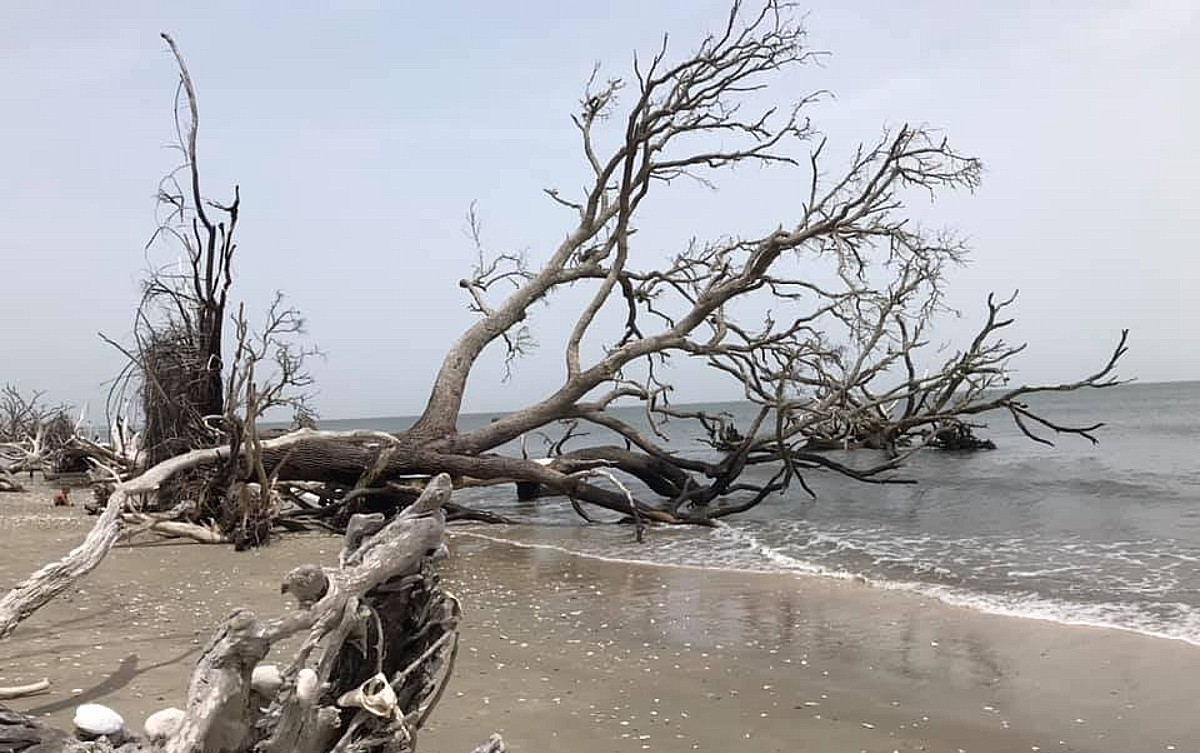
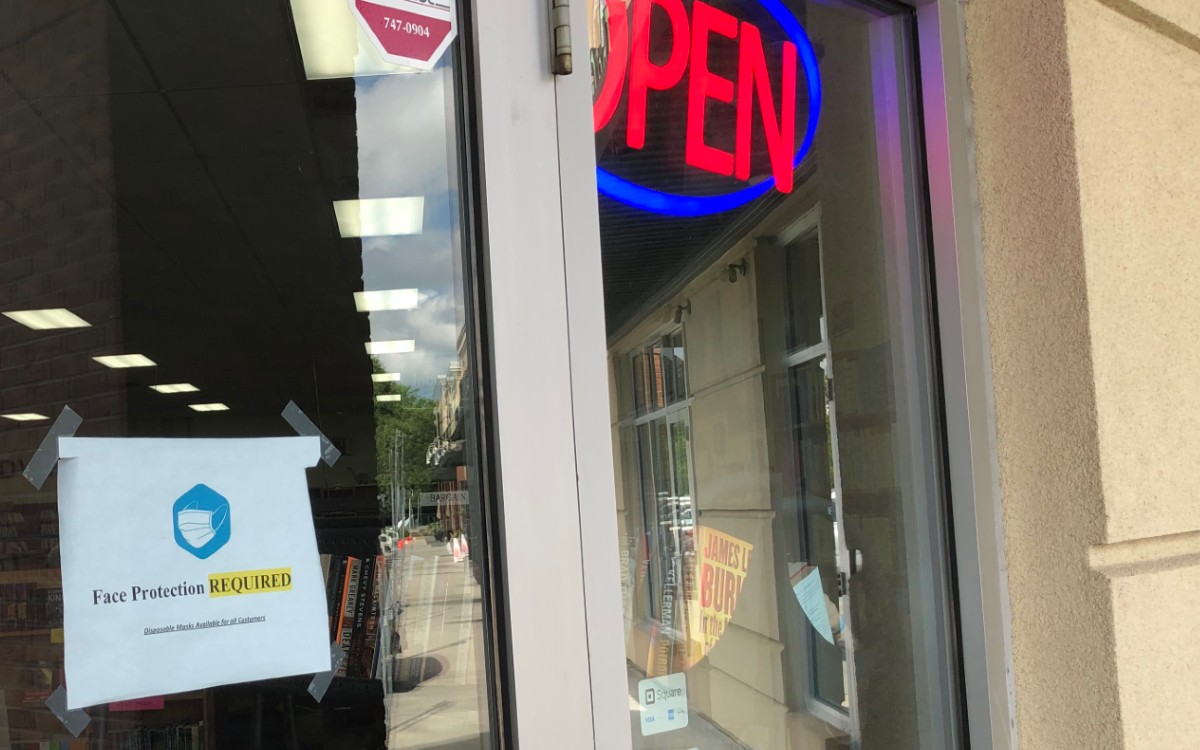

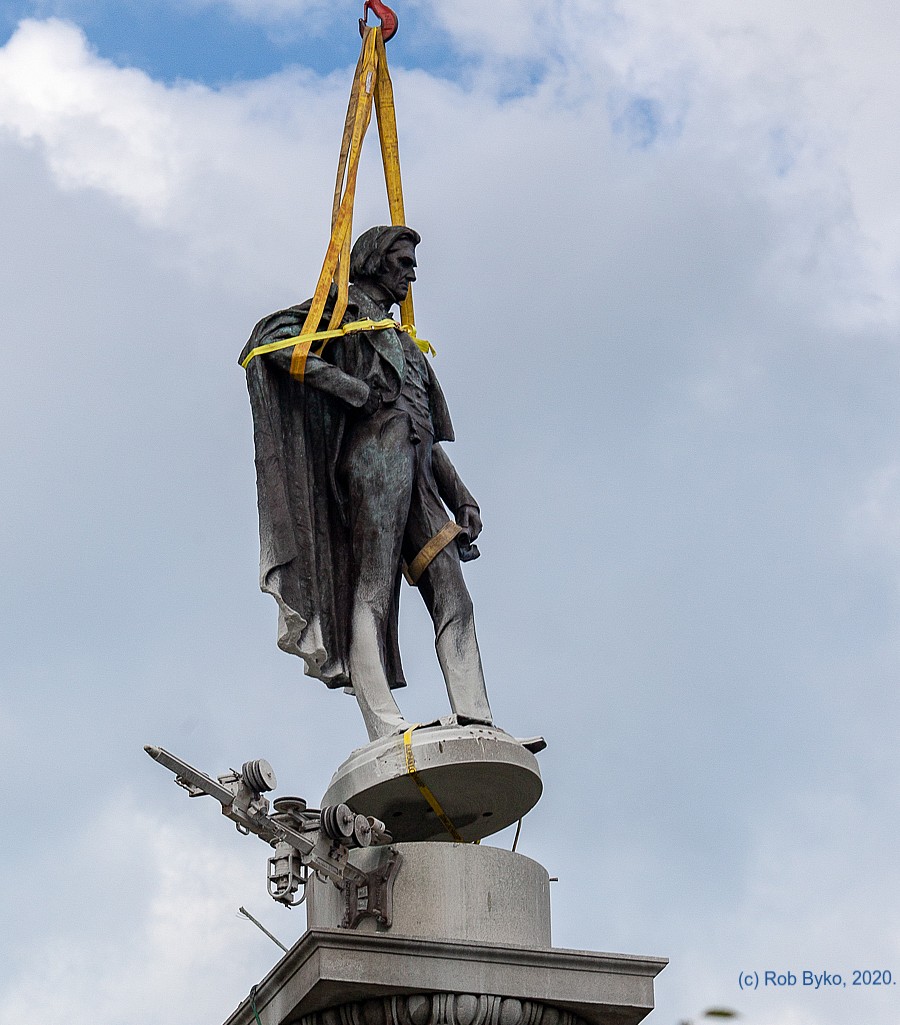
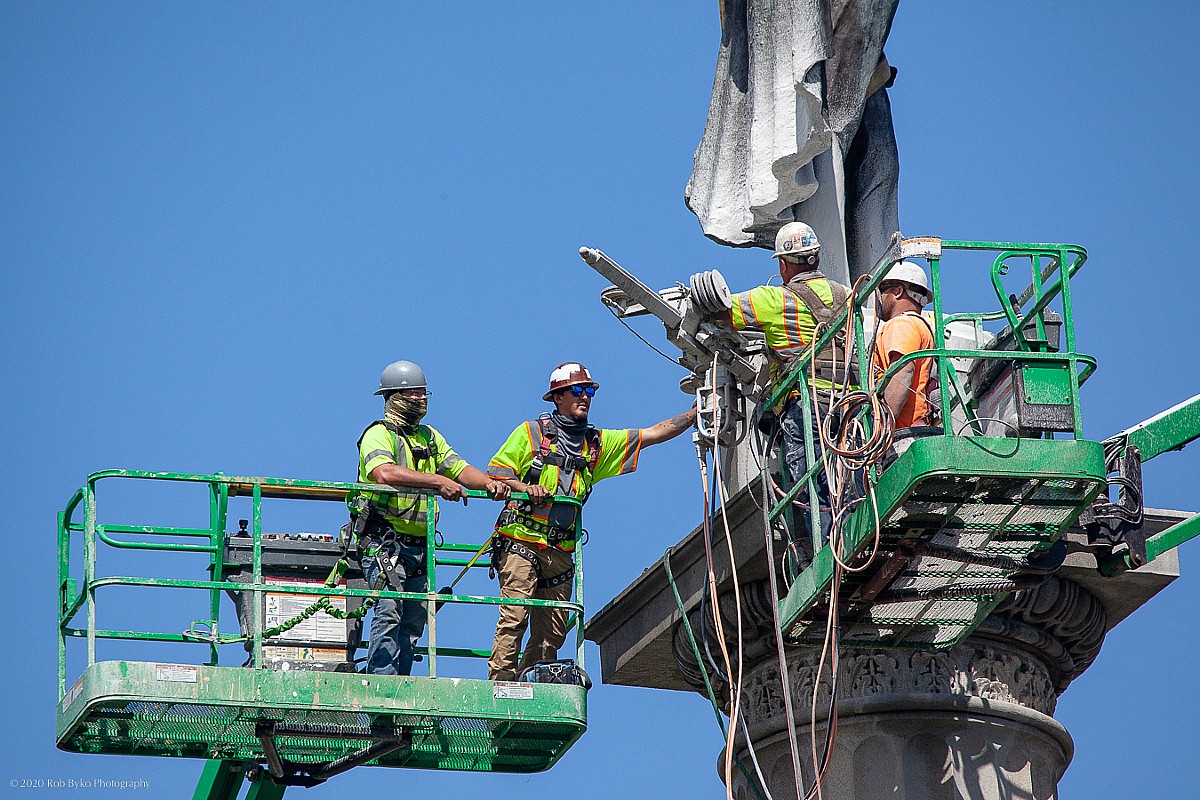
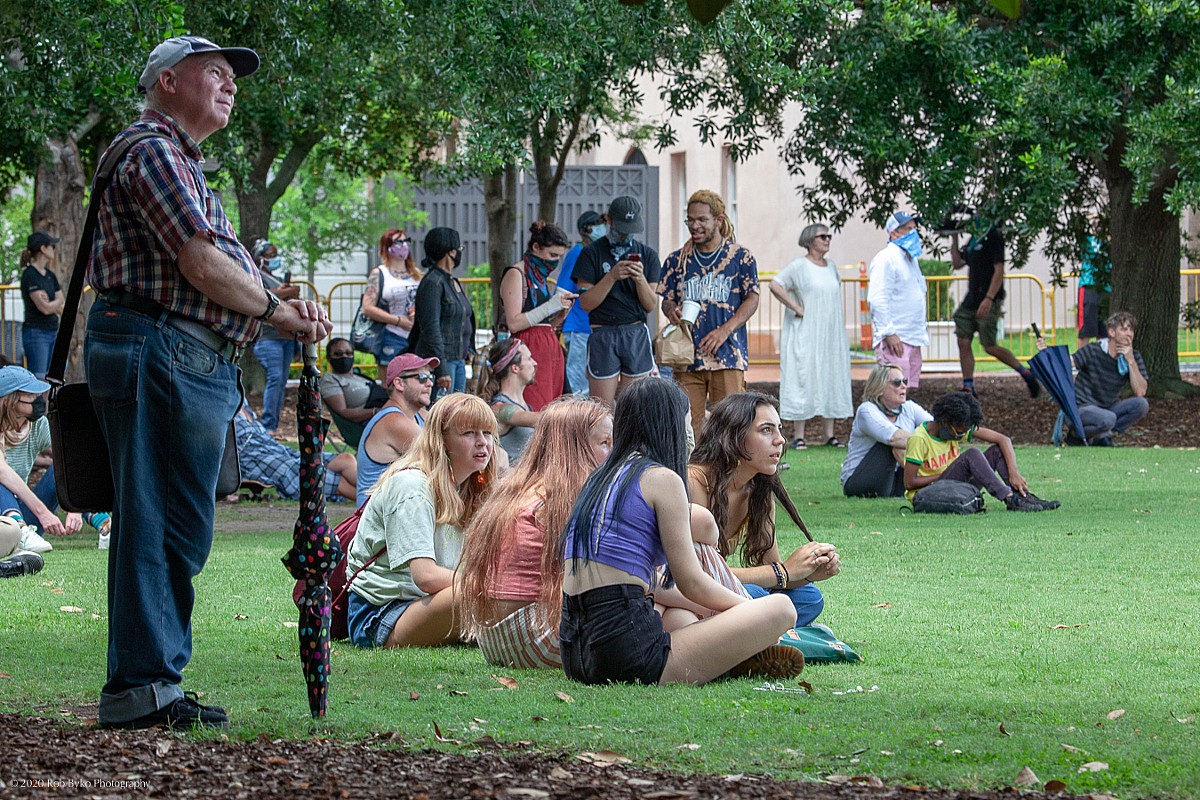
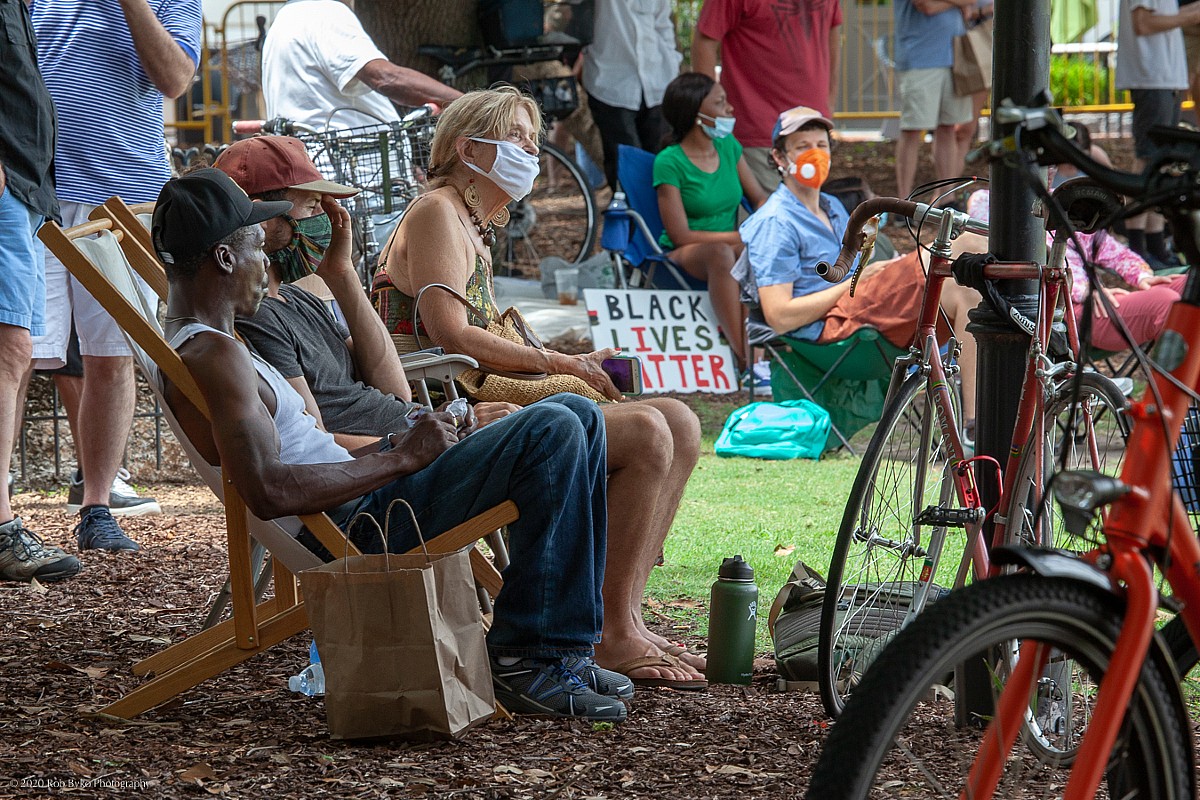
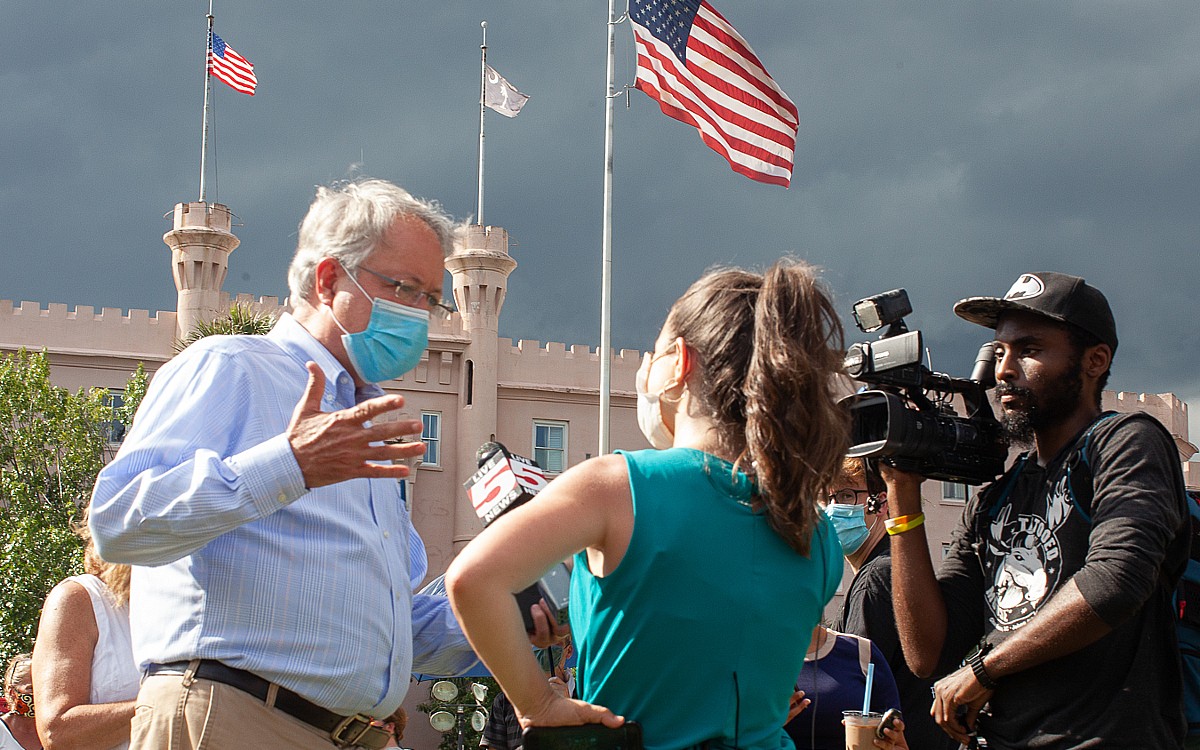
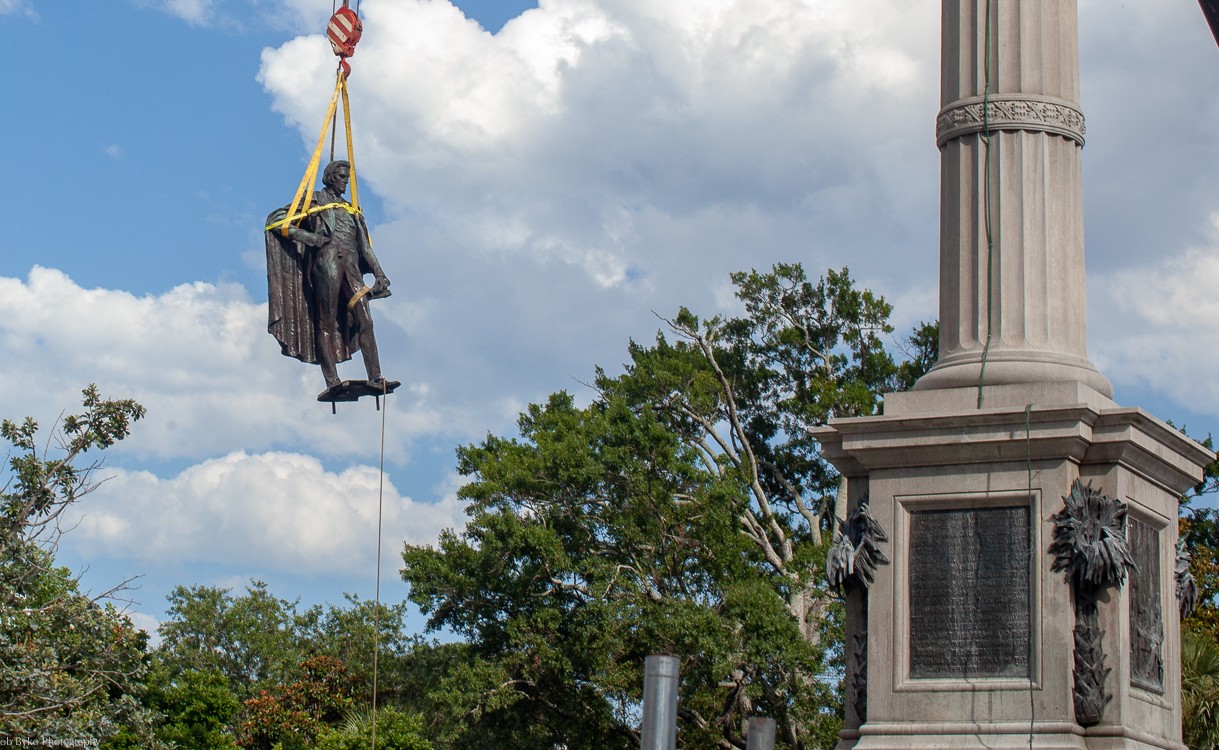




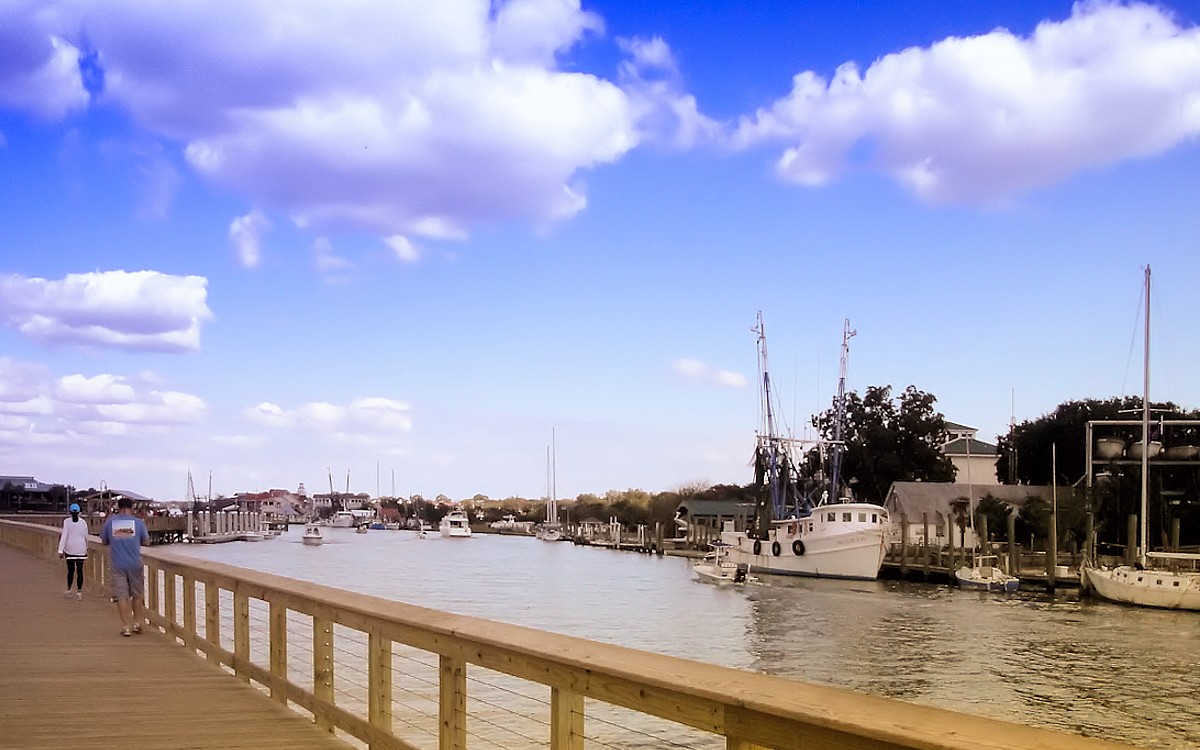

 We Can Do Better, South Carolina!
We Can Do Better, South Carolina!
























